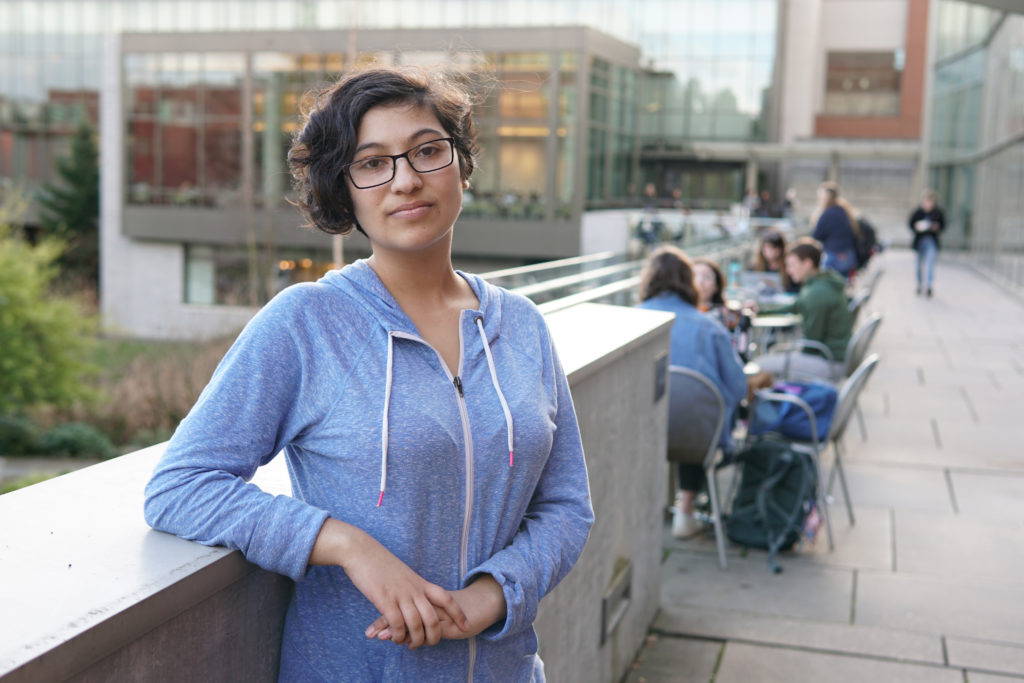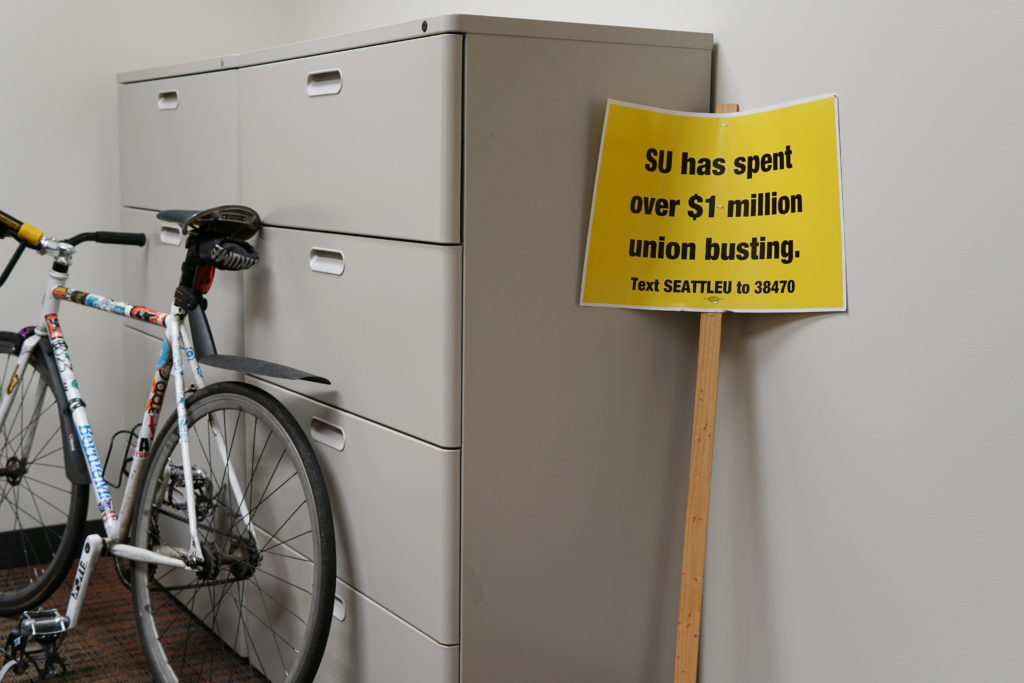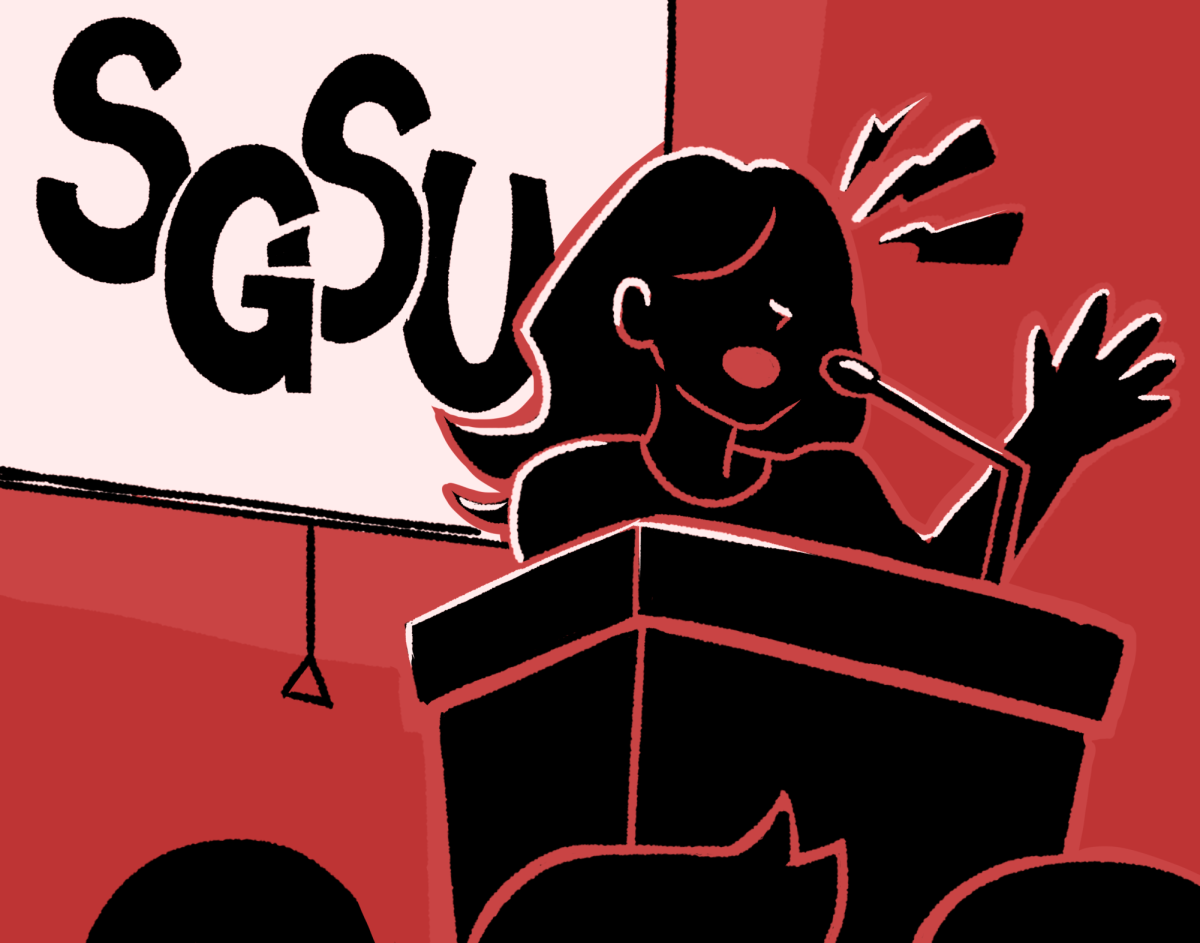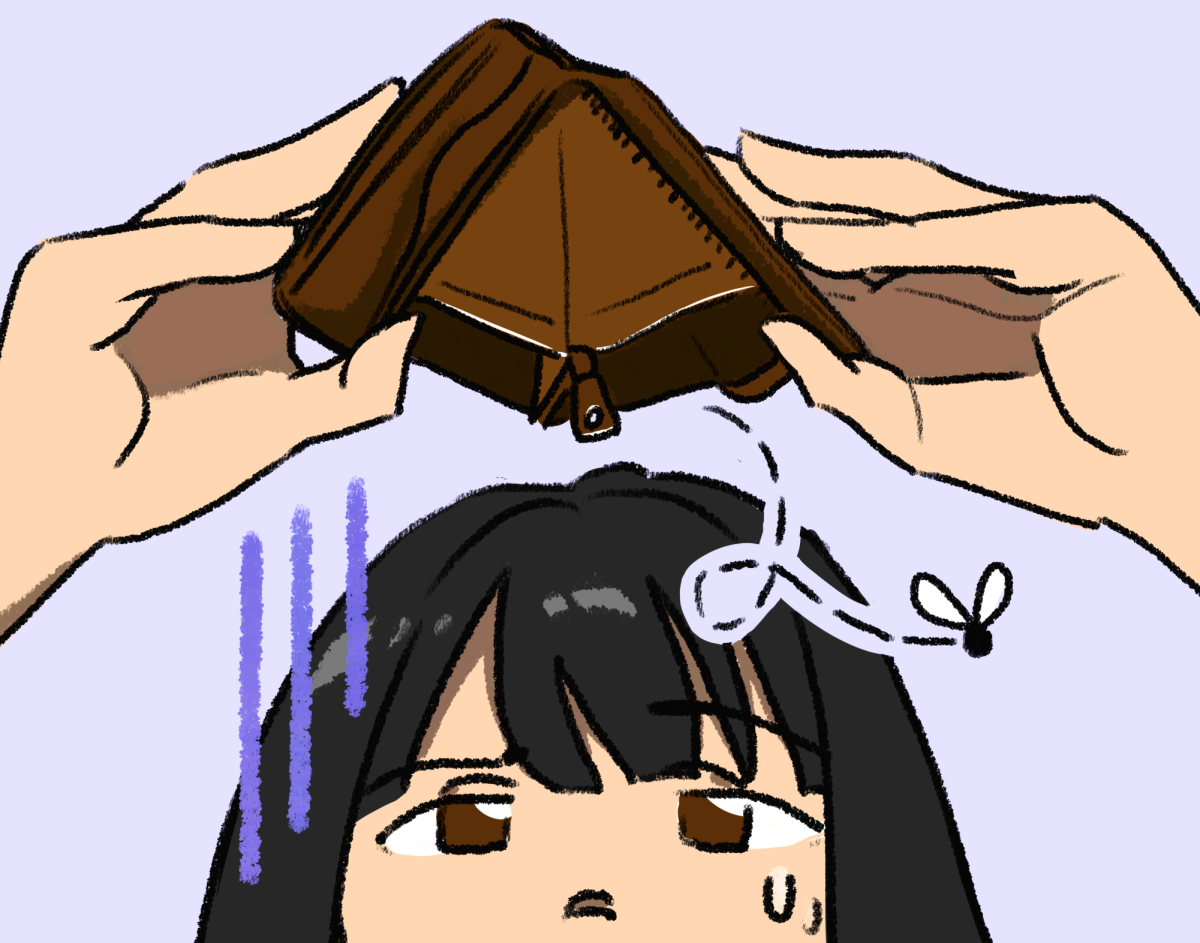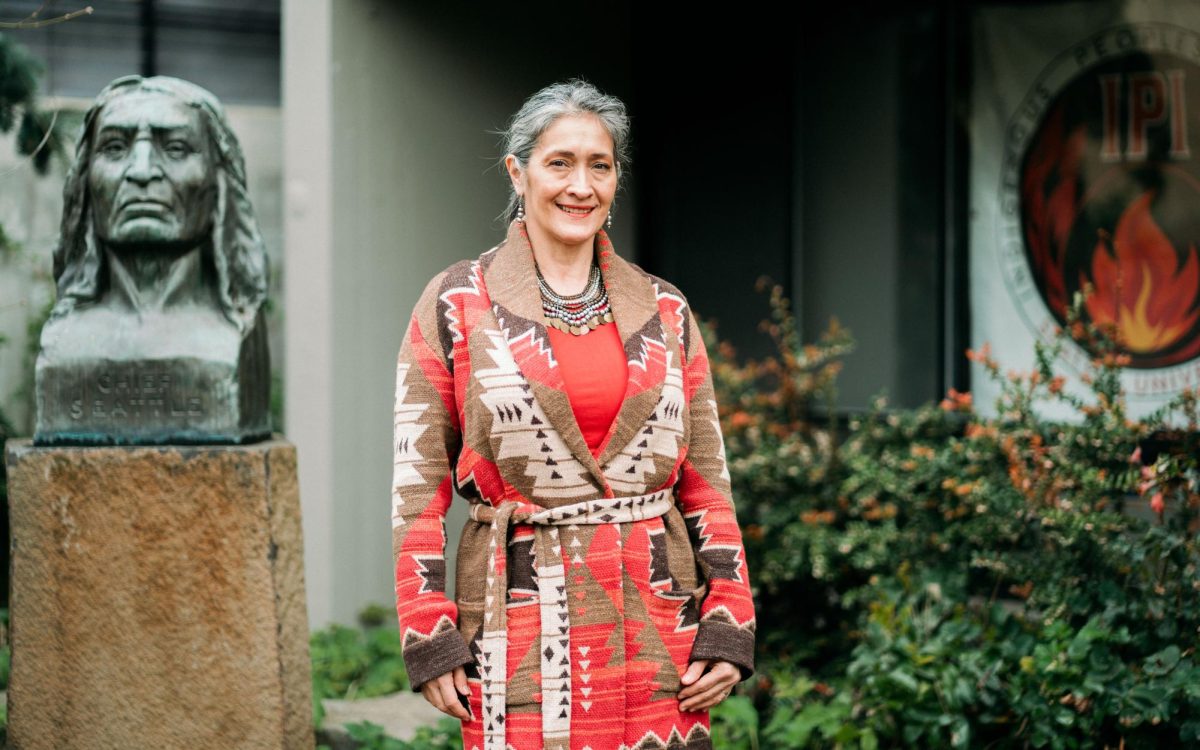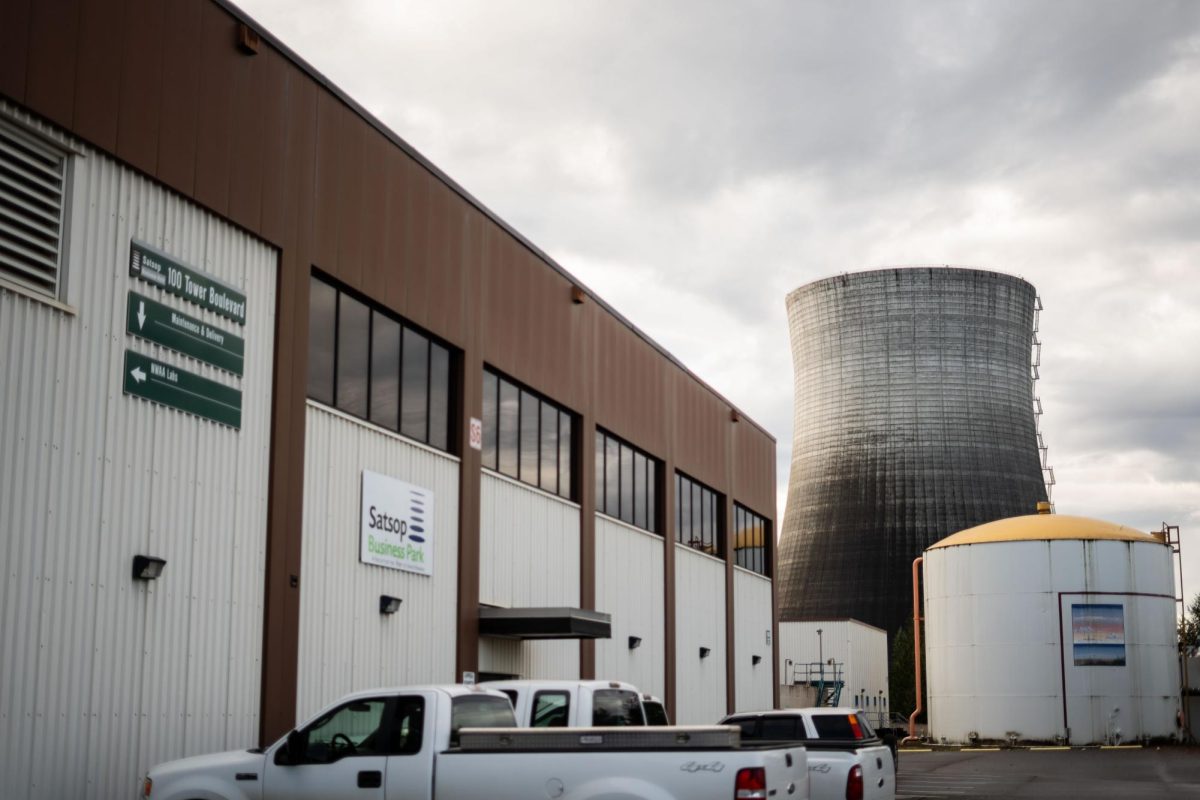In the northeast corner of campus stands nine stories of scaffolding that boasts a $52 million price tag. It will transform quickly into Seattle University’s newest residence hall, which will provide what many consider essential space as the university seeks to grow its student body, despite an increasingly suffocating housing market.
This new building looms over Xavier Hall to the south, the smallest student residence hall on campus. Nestled in the back of this humble building is Xavier 160, a former conference room that now serves as an office space for contingent faculty. The open room houses 15 adjunct faculty members with 12 desks organized, tetris-style, in a single room. Professors in Xavier 160 said 15 faculty share the dozen desks.
The irony is not lost on non-tenure track faculty members, whose multi-year battle to form a union came to a halt early January when the union organizing committee decided jointly with their collective bargaining representative, the Service Employees International Union (SEIU), to end their legal battle.
“[Seattle U was] going to pursue the legal avenues until they either exhausted them or got the answer they wanted,” said Professor Benedict Stork of the film studies department. “Which says something about our legal system and how it favors those with deep pockets.” Stork, who has been a vocal advocate within the university’s union organizing committee, added that he anticipated that, if it came down to it, Seattle U would pool money from other Association of Jesuit Colleges and Universities (AJCU) in order to cover legal fees.
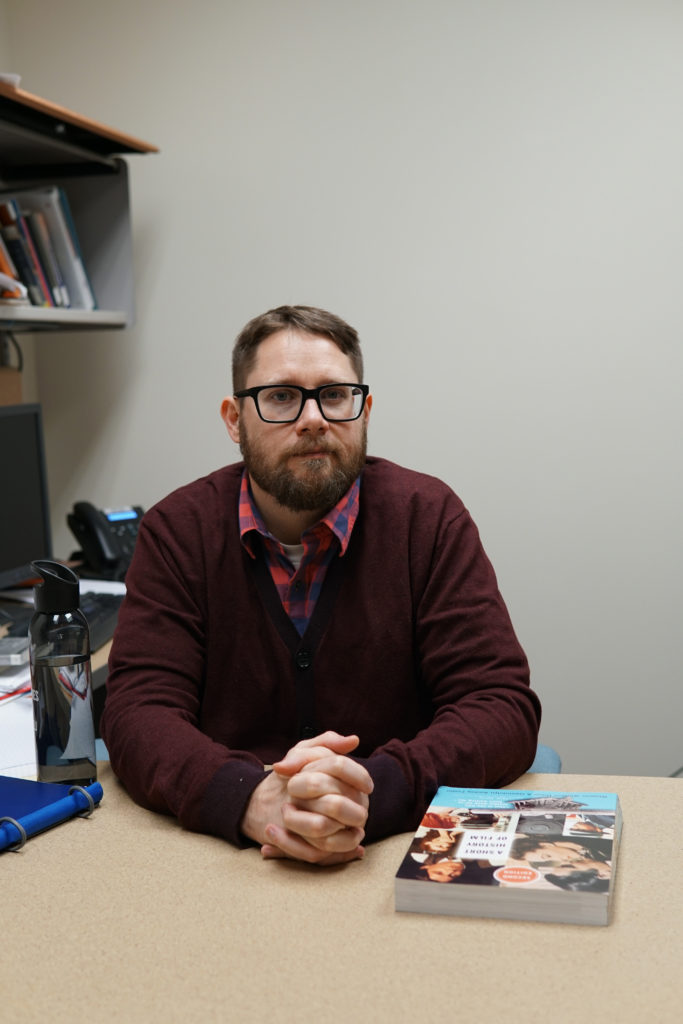
Ben Stork, a contingent faculty member in the film studies department, shares an office in a building across the street from campus.
The university employs approximately 770 faculty members total. Of those, 330 are tenured or tenure-track, 180 are full-time non-tenure track and 260 are part-time non-tenure track. The majority of faculty — who are not eligible for tenure — have found themselves entangled at the center of the battle between administrators and the United States Federal Government.
Unionization would allow faculty to bargain collectively. At Seattle U, non-tenure track faculty (also referred to as contingent faculty) are the most vulnerable in terms of job security, wages and work space. Some are hired back to the university on a quarter-to-quarter basis. Others — like part-time faculty members — get nearly two thirds the pay per course as their full-time counterparts. Many are crammed into offices, sharing desks and overlapping office hours with their colleagues, effectively dampening the experience for them as workers and, inadvertently, for their students.
During the last four years, the fight for unionization gained steam as circumstances for adjuncts became increasingly dire. A survey conducted by the College of Arts and Sciences Faculty Staff Senate last spring revealed noticeably low faculty morale within the largest college in the university. Many survey respondents wrote that they live paycheck-to-paycheck, struggling to pay for childcare and housing costs in a city whose skyrocketing prices show no sign of slowing down.
Seattle U adjuncts formed a union-organizing committee and were represented by SEIU, one of the largest union representative groups in the country. In May 2014, faculty voted in favor of forming a union. Despite the win, the administration delayed the vote by filing an appeal with the National Labor Relations Board, or NLRB. The university argued that the NLRB, a federal agency, had no right dictating the actions of a religious institution like Seattle University .
In Fall 2016, after a handful of appeals. the final vote was counted. It ruled in favor of the union. At this point the NLRB, a federal agency, certified the union. They would then oversee Seattle U’s union.
Following this, the university announced abruptly that they would not acknowledge the certification and will push against it, vowing to challenge the NLRB and take the case all the way to the Supreme Court. The university feared the oversight of the NLRB would erode the religiousness of the Jesuit university, alluding to the separation of church and state as an essential part of our country’s government.
“Basically what Seattle University was doing was suing the federal government to challenge their jurisdiction to regulate labor on campus despite the fact that there are a number of organized workers here,” Stork said. He’s referring to the facilities staff and custodial staff at the university who are, in fact, unionized despite the university’s religious backbone.
Stork said the organizing committee had even offered to seek other union options outside of the NLRB. The university denied this request, Stork said, leaving some faculty to believe that the university is determined to bar unionization regardless of the NLRB’s involvement and the potential erosion of the institution’s religious identity.
Alternatively, many faculty don’t seem too concerned with which organization oversees them; they simply want to be granted collective bargaining rights.
“On this campus, we’ve seen here in marches, a prolonged attempt to organize with union resources, and a steady drum beat of vocalized concern among faculty members,” said Eric Severson, full-time non-tenure track professor of philosophy. “It’s not that you’re ever going to find an organizational structure that makes everyone perfectly happy. But what is at stake in all of this is the identity of the institution, and the resonance between the core commitments of Seattle University and its actual practices.”
Not only did the university vow to fight unionization all the way to the supreme court, but the NLRB, which oversaw the case brought on by the SEIU, has shown signs of becoming increasingly anti-labor. Board members of the NLRB are appointed by the standing U.S. president. As Trump took office and began appointing new members to the board, it appeared that it would be adopting a less union-friendly thrust than that of the Obama administration.
With the NLRB tilting in the anti-labor direction, Seattle U’s organizing committee was concerned with the precedence this legal battle could set for other universities throughout the country also fighting for adjunct unionization.
“Given the way that the deck was increasingly stacking against us, we thought it would be best to step back,” Stork said when justifying the decision to end the dispute.
On Monday, University President Fr. Stephen Sundborg, S.J., sent out a university-wide email cementing the decision: “With that, the four-year-old legal dispute between the SEIU and the university is now finished.”
Although the lawsuit is over for the foreseeable future, many issues still plague non-tenure track faculty members beyond not having an office to meet with students.
For instance, adjunct professors are recruited to teach courses before the university knows if enough students will enroll in the class. Therefore, a professor could spend hours preparing for a course and planning their schedule around the class meeting time, only for the university to remove the class section due to lack of enrollment, leaving the professor without compensation or a job.
NICK TURNER • THE SPECTATOR
Rachele Lavelle, a third-year double majoring in Biology and Public Affairs, aspires to improve the integrity of nonprofit organizations like Seattle U.
Third Year Biology and Public Affairs Double Major Rachel Levelle said that this can affect the professor’s relationship with their students.
“When the professor isn’t allowed to necessarily express all of their views that a tenure-track professor would be able to, it really affects the depth of the education,” Levelle said. “It affects the fact that professors aren’t necessarily able to teach less populated classes, but very important classes because if they don’t get enough students, they won’t have a job that term.”
The university’s hiring processes are concurrent with a rising phenomena across the country of “adjunctification,” in which full-time, tenured professors either retire or leave the university and are replaced by part-time adjuncts, rather than another full-time, tenured professor.
This is more cost effective for U.S. universities because part-time adjunct professors at Seattle U are paid per course almost 40 percent less than the rate of a full-time professor would receive, and they do not have to offer benefits for part-time employees.
“It is relatively easy to cut the salaries and peripheral benefits of contingent faculty members,” Severson said. “In many respects, this is a vulnerable group of employees, for whom cutting benefits doesn’t, in obvious ways, negatively impact on the institution. Of course, at the same time, these same faculty members are playing a significant role in the function of the institution.”
Interim Provost Bob Dullea said that even though the lawsuit was dropped, continuing a direct conversation with adjunct faculty to hear how they want to continue their engagement with the university is an important goal that he is committed to.
Dullea sent a message to all adjunct faculty members inviting them to an open meeting later this month to hear their hopes, concerns and frustrations, as well as to keep them directly involved with the university’s governing structures and decision making processes.
“Clearly [the lawsuit] created a wedge in the campus, and I hope that we’re in a position now where we can move forward without that wedge,” Dullea said. “The university has a responsibility to find ways to be really responsive to the needs of all of its employees, but also particularly the non-tenure track faculty.”
However, some students don’t buy into the administration’s rhetoric. Levelle, who was involved with previous demonstrations on behalf of non-tenure track faculty, said that the statements seem similar to the administration’s stance before the lawsuit, and that during the past four years there doesn’t seem to be much cause for the university to change their stance.
“The university is really a microcosm of the world that we’re going to be moving into after graduation,” Levelle said. “It’s always important to be talking with other students about what the university might not necessarily be telling us and what problems are actually under the surface.”
Fr. Sundborg declined an interview with the Spectator. He did, however, send us a short statement in response, included below in its entirety:
“We welcome this development so that we can work directly with our adjunct faculty who are so important in contributing to our mission.”
Anna and Tess can be reached at
[email protected]





